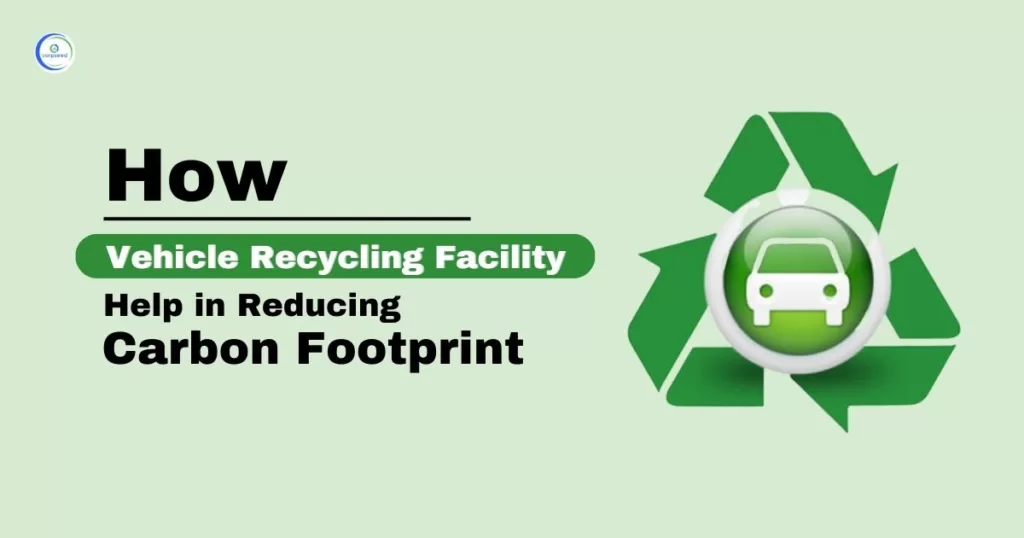Introduction:
As the world becomes more ecologically conscious, sustainable practices are essential across all industries. The automotive sector plays a significant role in mitigating climate change. Vehicle recycling facilities help in reducing the carbon footprint associated with the lifecycle of automobiles.
What is Vehicle Recycling Facility?
A vehicle recycling facility handles the dismantling, recycling, and disposal of end-of-life vehicles (ELVs). These facilities act as the final destination for vehicles that can no longer be repaired or used, providing an environmentally responsible solution for their disposal. Vehicle recycling facility has the infrastructure and expertise necessary to efficiently break down ELVs and remove material of high value.
Role of Vehicle Recycling in Reducing Carbon Emissions
-
Recycling and Disposal of End-of-Life Vehicles:
Vehicle recycling facilities serve as the final destination for end-of-life vehicles (ELVs). ELVs are dismantled and their components recycled or properly disposed of so that they do not end up in landfills. This process greatly reduces the environmental burden resulting from the disposal of vehicles, thereby preventing the release of harmful substances into soil, water, and air.
-
Extending the Life Cycle:
In order to extend the life cycle of vehicles, vehicle recycling facilities an important role. These facilities are recycling usable parts, components, and materials from retired vehicles rather than allowing the old vehicles to be disposed of or discarded. This minimizes the need for new production, reducing the demand for raw materials and energy consumption.
-
Material Recovery and Recycling:
Once the vehicle’s life is over, it becomes a treasure trove of valuable materials such as steel, aluminum, plastics, and rubber. Recycling these materials not only reduces the need for virgin resources to be extracted and processed but also saves energy and reduces greenhouse gas emissions that would otherwise be generated during the production of new materials. In addition, recycling decreases the impact of waste disposal on the environment and protects potential hazardous materials.
-
Energy Conservation:
The process of recycling vehicles helps to conserve energy. Compared to creating a new vehicle from the ground up, it takes less energy to break down and recycle vehicles. The energy savings result from a reduction in the necessity to produce new materials through mining, refining, and manufacturing processes. And it reduces carbon emissions from power plants and other energy-intensive operations.
-
Emission Reduction:
Vehicles recycling facilities help to reduce greenhouse gas emissions, alongside the benefits for the environment described above. These facilities reduce the requirement for manufacturing new parts and reusing vehicle components. The manufacturing process often produces large amounts of carbon dioxide and other greenhouse gases, which are very costly to generate.
-
Responsible Handling of Hazardous Substances:
Vehicles contain various hazardous materials such as battery acid, engine oils, and refrigerants, which cause environmental risks if not properly managed. To ensure that these hazardous materials are safely handled and disposed of, vehicle recycling facilities shall comply strictly with environmental regulations and protocols. This facility prevents the release of toxic substances into the environment and protects ecosystems and human health by ensuring their proper treatment.
Criteria for the scrapping of the vehicle
- The vehicle is beyond economical repair.
- Severe structural damage or frame corrosion.
- Engine or transmission failure that is not economically feasible to repair.
- Extensive electrical system issues.
- Excessive mileage or wear and tear.
- Failed safety inspections or inability to meet emission standards.
- The cost of repairs exceeds the vehicle’s value.
- Total loss due to accident or natural disaster.
- The vehicle is no longer roadworthy or deemed unsafe to operate.
Conclusion:
In this article, we explored how these facilities contribute to the reduction of carbon emissions and the overall environmental benefits they offer. Through Vehicle recycling facilities’ efforts to extend the life cycle of vehicles, recover and recycle materials, conserve energy, and reduce emissions, these facilities provide significant environmental benefits. By recognizing the importance of these facilities, we can move closer to a greener future with reduced carbon emissions and a more circular economy.

